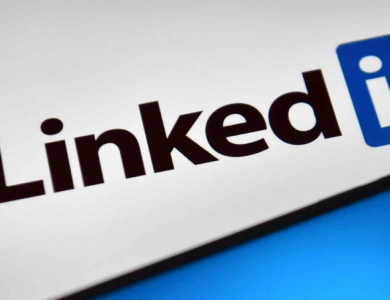6 Ways to Improve Your LinkedIn Profile

In today’s tech-savvy age, a well-crafted LinkedIn profile plays a pivotal role in propelling your career forward. To secure positive responses from the job listings you apply to, your LinkedIn page must accurately represent you. In this guide, we’ll share some tactics that answer the question, “What makes an effective LinkedIn profile, and how should it be structured?”
In the digital era, a thoughtfully designed LinkedIn profile holds significant weight for job seekers. Employers and recruitment experts frequently turn to LinkedIn to gather comprehensive insights about candidates before making final decisions regarding job postings. Therefore, it’s essential to ensure that your LinkedIn profile is sufficiently informative and sets you apart from other candidates.
Before applying to any job listing you come across on LinkedIn, it’s wise to revisit your profile to confirm whether it provides ample information. If you believe your LinkedIn profile adequately reflects your professional identity, this guide will closely examine LinkedIn profile tactics that can give you the competitive edge when pursuing job opportunities.

Contents
1 – Be Careful with What You Write – Pay Attention to Spelling Rules
Remember that LinkedIn is a platform closely associated with professionalism and the business world. Individuals from all corners of business life communicate with each other, create business connections and follow developments in the business world on LinkedIn. Therefore, everything shared on this platform is usually of great importance. LinkedIn is one of the top job search platforms, and employers place great emphasis on written communication skills when evaluating job seekers.
In the business world, individuals who can communicate accurately and effectively in writing are always preferred. Good spelling, grammar, and communication skills can strengthen your professional identity and make you stand out in your job search. When using LinkedIn effectively, strictly following the spelling rules and communicating clearly and understandably will help you make a positive impression with employers and business contacts.
LinkedIn is a powerful tool for building and expanding your professional identity, and if you want to stand out on this platform, it’s important to improve your written communication skills. That’s why we strongly recommend that you pay attention to spelling rules to make your use of LinkedIn more efficient and strengthen your professional image.
Bonus – Buying LinkedIn Followers
The number of your LinkedIn followers symbolizes credibility for many people. It doesn’t matter whether you are a large company or an employee looking for a job. With the effect of buying LinkedIn followers, you can create buzz around you and make people curious about you. Nowadays, many people buy LinkedIn followers to use as a kickstart.
Remember, it is very important that the place where you buy followers is a reliable and cheap platform! Just like BoostGrams! Since the followers, likes and views you buy from BoostGrams come from 100% real accounts, your account can continue to grow at full speed without any negative impact!

2 – Don’t Forget to Customize Your Profile URL
Your LinkedIn profile URL is an important detail associated with you. A customized URL makes your profile more professional and easy to remember. This can help you make a better impression when you share it during your applications or when making business connections. Choosing a clean and clear URL that suits you will complete your professional appearance.
Beyond making your first impression, your profile is an effective tool for developing your network and capturing job opportunities. Updating and improving your profile using LinkedIn profile tactics can positively impact your career. That’s why it’s important to pay attention to these important details, including your customized URL.
3 – Make Your Profile Public
Making your LinkedIn profile public is a way to promote your professional presence to a wider audience and capture more job opportunities. Making your profile public has some advantages:
Broader Visibility: By making your profile public, you can enable millions of users on LinkedIn to find and review you. This allows you to more easily connect with potential opportunities such as employers, business contacts, and industry experts.
More Job Opportunities: Employers and recruiters frequently search for candidates on LinkedIn. Having your profile public opens you up to more job opportunities. It also provides access to independent work opportunities such as freelancing or consulting.
Wider Reach of Shared Content: Having your profile public helps the content you share reach a wider audience. This makes it easy to share your knowledge and interests in the industry.
When making your profile public, you should also consider your privacy. You should carefully review your privacy settings to protect your personal information. LinkedIn offers detailed settings in this regard, so you can maintain the control you want.
4 – Use Keywords in Your Profile
Using keywords on your LinkedIn profile is an important way to express your professional identity and skills more effectively. When listing your skills in your profile, consider that these skills may be of interest to employers and business contacts. Especially when you’re looking for a job, make sure the skills in your profile match the job postings.
When listing your skills in your profile, consider that these skills may be of interest to employers and business contacts. Especially when you’re looking for a job, make sure the skills in your profile match the job postings. Additionally, using terms related to the industries you work in or are interested in in your profile can distinguish you from other professionals in the industry. This can help employers and business contacts see you as part of the industry.
Finally, when describing your experiences in your profile, highlight what kind of projects you worked on and what kind of results you achieved, using relevant keywords. Employers may be impressed to see your success stories. By using keywords strategically in your LinkedIn title and resume section, you can get your profile discovered more. Your headline should quickly convey what you do and what type of professional you are.
5 – Optimize Your Connections
On LinkedIn, your connections form the foundation of your professional network and play an important role in your career. The quality of your links is as critical as the number of them. Here are some important points to consider when managing your links:
- Focus on the quality of your links rather than the number of them. It’s more important to connect with people who will truly add value to you, are interested in your industry, or can provide job opportunities.
- When sending a connection request, it’s always good to include a personal message. Explaining why you want to connect can help you get more positive responses.
- Joining professional groups and communities related to your industry on LinkedIn allows you to make more quality connections. These groups make it easy to connect with other professionals who share your interests.
- It is important to maintain regular communication with your connections. Sending congratulations, liking or commenting on their posts is a way to strengthen your relationships with your connections.
- By categorizing your connections, you can manage them more effectively. For example, separating your connections into different categories, such as employers, business contacts, industry experts, etc., can help you in your business and in developing your network.
Your connections are the relationships you build with people who will provide you with opportunities not only for your current job search, but throughout your career. Quality and effective connections can inspire you, provide new business opportunities and support your professional development.
6 – Optimize Your Work History
The work experience section on your LinkedIn profile forms the foundation of your professional identity and is key to telling employers what kind of background you have. Optimizing this section can increase your chances of landing job opportunities. Here are some tips on how to best present your work history on your LinkedIn profile:
- When describing your work experience, be sure to highlight not only your duties but also your achievements. Employers want to see what the person they hire can achieve. For example, when describing your projects and tasks, describe the results of these projects, your rate of achieving goals, and their positive effects.
- Backing up your business successes with numbers can help you be more effective. For example, providing concrete examples such as “I increased process efficiency by making daily data analysis 30% faster” will help you document your achievements.
- When describing your work experience, feel free to use terms and concepts that may be of interest to your industry and employer. This shows that your profile is particularly suitable for certain job positions. For example, statements such as “I have implemented the ISO 9001 quality management system in accordance with industry standards” may attract the attention of employers.
- Clearly stating when each of your work experiences started and ended will help keep your profile organized and clear. Employers pay attention to such details.
- Every work experience has characteristics that make you unique. Adding customized descriptions that tell employers what skills each of your positions gave you and how you grew will enrich your profile.
- If possible, providing employers with references can support the validity of your work experience. Getting references from previous colleagues or managers can increase the credibility of your profile.
- Aligning your header section with your work experience will make your profile appear more consistent. The title should quickly explain what you do.
Your LinkedIn profile allows employers to better understand and evaluate you. Therefore, optimizing your profile by best representing your work history can contribute to the development of your career.
By following these tactics, you can create an effective LinkedIn profile that sets you apart in a competitive job market and positions you for success in your career. A well-crafted LinkedIn profile provides a powerful tool for professional growth, networking, and accessing job opportunities.






